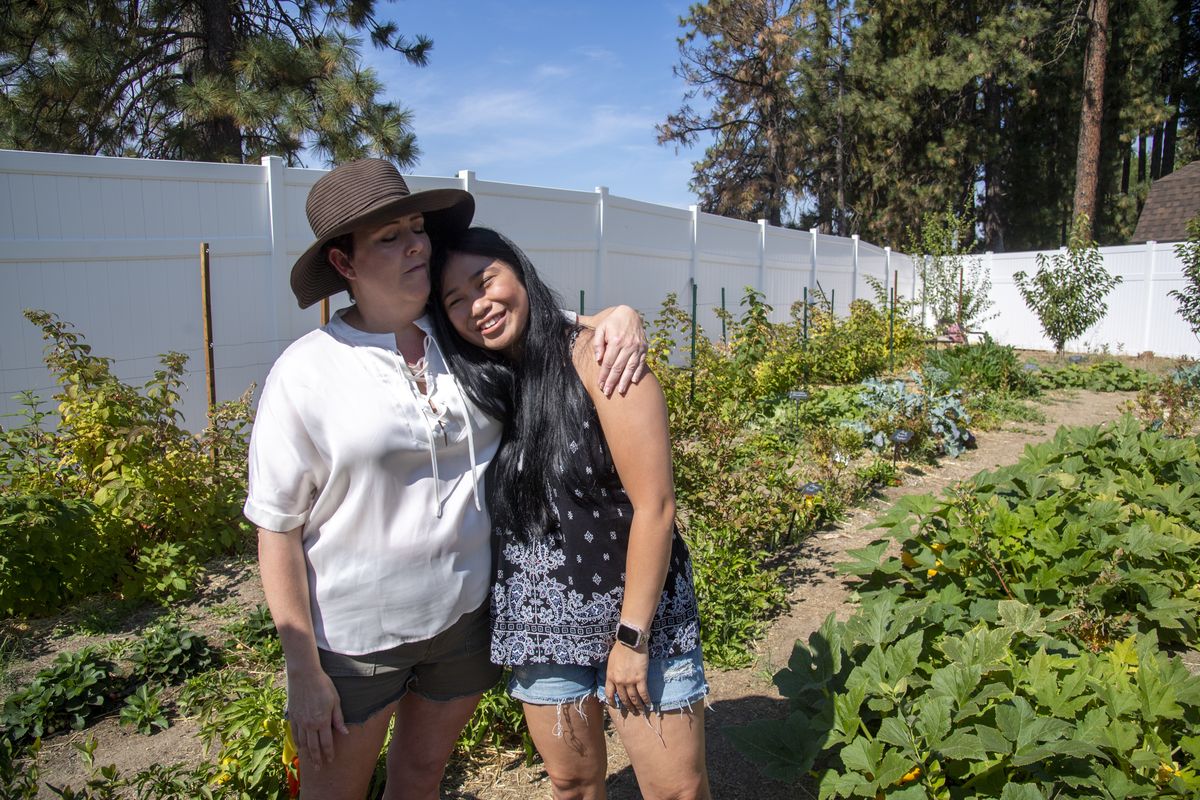Pandemic projects: Alvarez family members of Colbert are budding gardeners

They call themselves the accidental gardeners, and their motto is “go big or go home.”
Suzanne and Robert Alvarez with some help from their four daughters turned a once wooded section of their Colbert backyard into a garden/orchard, bursting with berries, fruit and veggies.
“What really makes this more remarkable is we have never planted anything before in our lives,” said Suzanne.
Several years ago, a windstorm toppled one of their 17 pine trees onto their neighbor’s house. Robert cut down 15 of the remaining trees and they talked about someday planting a garden, but it took a pandemic to get them started.
“A year and a half ago, we had a fabulous family trip to Mexico planned,” Suzanne explained. “Then COVID happened. My husband said, ‘I’m putting in the garden.’ ”

Lack of experience didn’t hamper them a bit. First, they put in 20 raspberry bushes, followed by 30 blueberry plants. They decided to add goji berry bushes but stopped at two.
“They maimed me,” said Suzanne, showing a scratch on her arm. “They have really sharp barbs.”
Then came tomatoes, peppers, eggplant, strawberries and more.
“We’ve learned a lot about plants – like 17 zucchini plants is 16 too many,” she said, comparing herself to Eva Gabor in the television series Green Acres. “I don’t have a green thumb–it’s more chartreuse before I kill any plants.”
Next came the orchard; four peach trees, three apple trees, three cherry trees, and a lone apricot tree.
It’s a good thing peaches are Robert’s favorite.
“I didn’t know every peach blossom turned into a peach!” said Suzanne, who baked their haul into pies and cobblers.
The other trees were less successful. The apricot tree died because they needed to be planted in pairs, and the family suspects an early-frost zapped their apple trees.
“We did get eight cherries, though,” she said. “We were very excited about those eight cherries.”
But not as excited as they were about their watermelon.
When the heat got their cauliflower and broccoli, Suzanne planted watermelon in July.
“We got a big one and a baby,” she said. “I come out and cover them every night. I’m so proud of them!”
Their peppers including, jalapeno and poblano, are thriving, too.
“We’re a Hispanic family,” explained Suzanne. “I grill them, peel them, and then freeze them to use in authentic Mexican dishes.”
They soon realized their garden served as a food bank for the local deer population, so this year they erected an 8-foot fence. That meant they could give away vegetables to friends and neighbors and donate several hundred pounds to area food banks.
Mambo, the family cat also got bit by the gardening bug. He diligently patrols the garden.
“Thanks to his quick response he killed the local career criminal mole and deposited his body on our deck,” said Suzanne.
Less helpful? Their beagle who loves to eat and roll in the steer manure they used as fertilizer.
This year they used Alaska fish fertilizer and stored it in their garden shed. The dog dragged it out into the yard, opened it, and had a party.
“He was fine,” Suzanne said. “He’s got a stomach of steel.”
The novice gardeners delight in their pandemic project.
“There’s something so satisfying in planting, cultivating and harvesting, something you’ve cared for,” she said.
And the garden has offered the family important lessons in more than just growing things.
“All of our daughters (ages 16 to 20) are adopted from China,” said Suzanne. “This has been a hard year for them. They were spat on, yelled at, and called racial slurs. We used the garden as an object lesson in resiliency. Despite frost, heat, bugs, the garden survives and comes back even stronger.”
———
Correspondent Cindy Hval can be reached at dchvavl@juno.com.